When we asked our contributors what their most favorite dive location was, they came back with photos and stories of beautiful and exciting spots both near and far from home. From the tropical waters of Papua New Guinea, Indonesia, the Philippines, Chuuk, Mexico's Revillagigedo Islands, Solomon Islands and Cayman Islands, to the subtropical waters off Baha California, Guadalupe Island and the Coronado Islands in Mexico and the eastern coast of Florida in the United States, to the temperate waters off South Africa, the US state of New Jersey, and British Columbia in Canada, to the frigid waters of Alaska, X-Ray Mag contributors share their favorite dive locations.
Contributed by
(To see all the photos, please scroll down and download the full article PDF.)
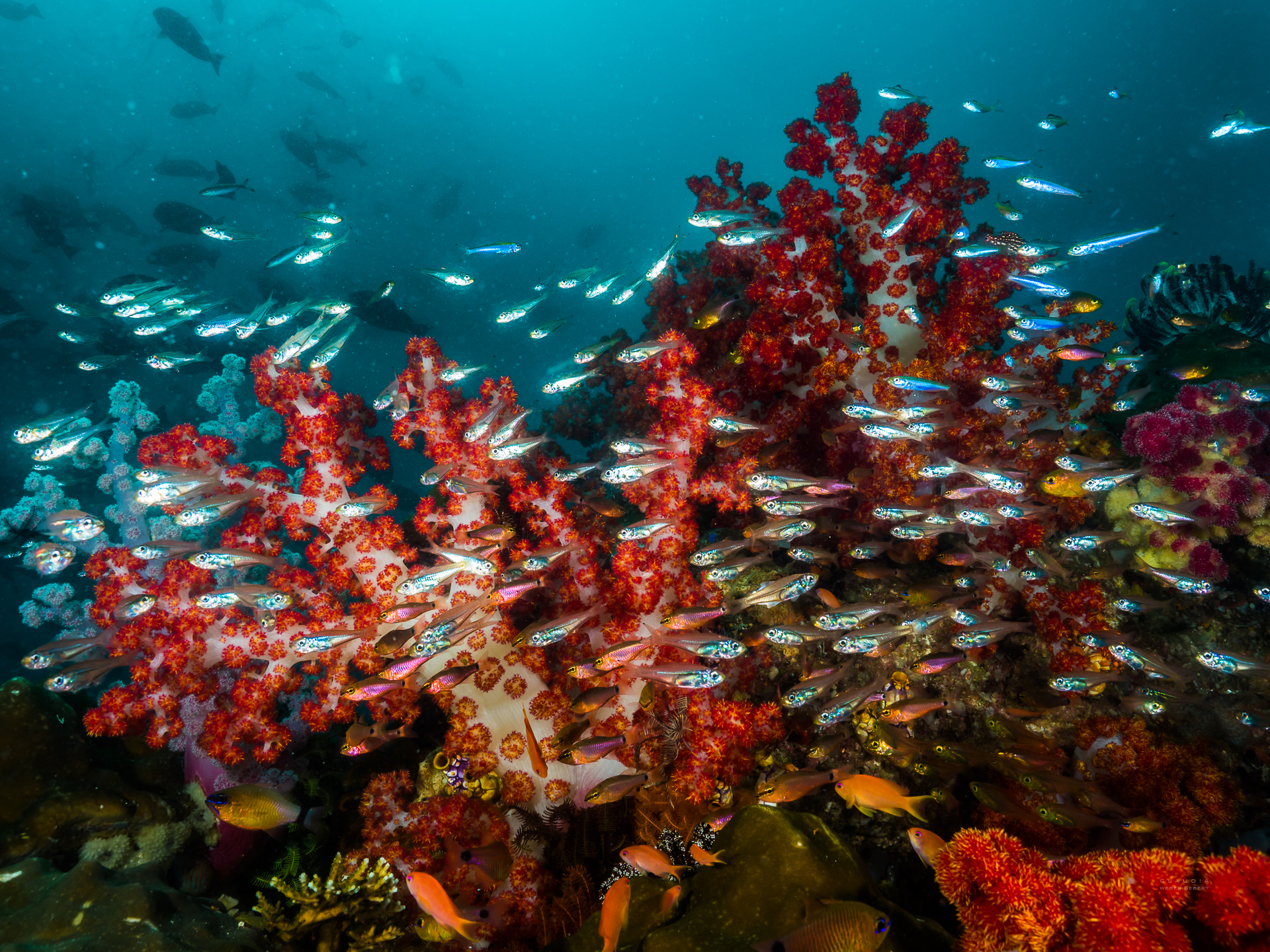
Triton Bay, Raja Ampat, Indonesia
Text and photos by Claudia Weber-Gebert
Raja Ampat is well known and beloved by many a diver. One hour’s flight south from Sorong leads to Kaimana; this was where my journey to Triton Bay began. The diving area of Triton Bay, south of Raja Ampat, was explored in more detail only about four to five years ago. Only a handful of liveaboard boats go to these dive sites, and there is currently only one resort. Apart from a few local small fishing villages, there is no civilisation.
However, old traces of civilisation can be seen here in the form of over 10,000-year-old prehistoric wall paintings. The captain skilfully steered our vessel, the Gaia Love, right up to these places, so that the guests could take pictures of these special prehistoric works of art.
On the coast of West Papua, an upward current brings nutrient-rich water to the surface. The resulting abundance of fish and biodiversity is indescribable. There are so many fish that you cannot see the reef. Enormously large and colourful soft corals make up the basis of these dive areas, starting at a depth of only five metres.
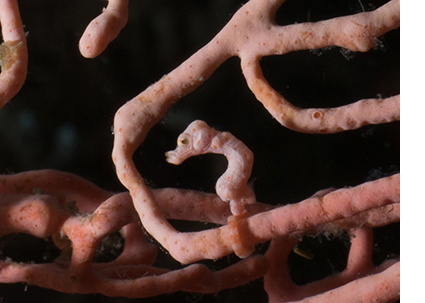
Beautiful hard corals can also be found in completely intact and densely populated reefs, which one can no longer find anywhere else. Fish hide under large table corals, barrel sponges stand like huge planters between the corals, and coral gardens support large areas of black corals. The sight is overwhelming. Although the water is slightly green, the visibility is fine. Underwater photographers will definitely get their money’s worth, in both macro and wide-angle shots.
Where the currents pass the steep walls, one can see large, up to 3m-high coral sea fans in every colour and variety. On the sea fans, one can find the much sought-after photo subject: pygmy seahorses, at a depth of only 15m. Most of the time, these little seahorses can only be found from 25 to 30m.
Schools of fish stream by like infinite ribbons through the water, including silversides, snappers, fusiliers, buffalo (or humphead) parrotfish, batfish and barracudas. Mantas and mobula rays also circle over cleaning stations. Of course, small macro subjects can also be found everywhere, such as lots of various colourful nudibranchs, crabs, ornate ghost pipefish, blue-ring octopuses and wunderpus octopuses.
Underwater life rages on, with silversides forming tight swarms, “flying” in formations and giving way to predators, in a skilful spectacle. The swarms are so densely packed that the light dims. The spectacle continues above the water’s surface when predators such as dolphins and sailfish, which hunt for smaller prey fish, leap out of the water—these spectacles could even be seen from our vessel. In this case, one could certainly say that pictures really do speak louder than words! The fabulous underwater world here can hardly be described in mere words.
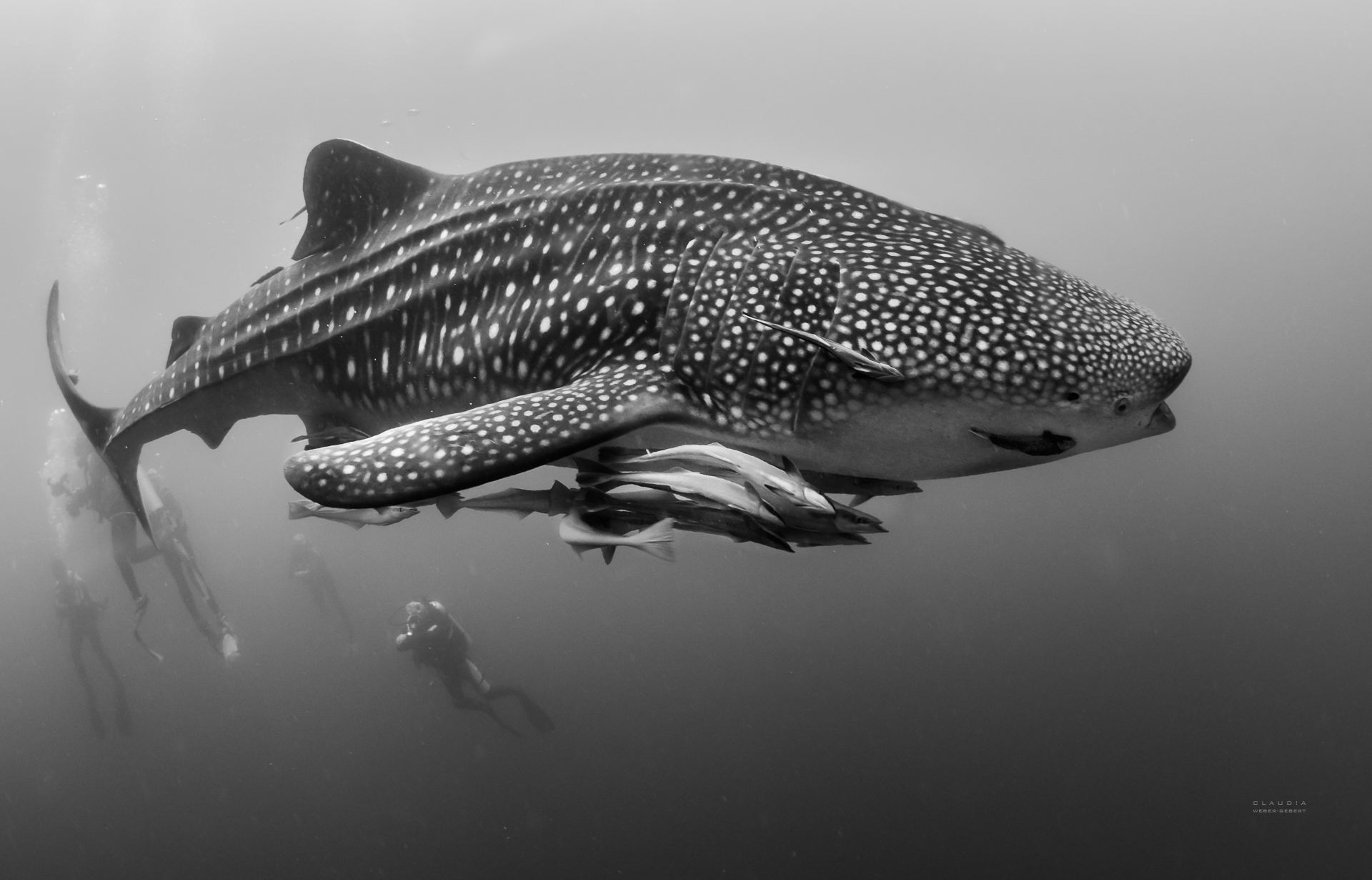
And then there is a very special highlight: whale sharks that come to a bagan fishing platform, where local fishermen breed small bait fish. The whale sharks had come here on their own. Nowadays, they are fed to an acceptable level, but only if there are liveaboards on site, i.e., one to two times a week. So, they stay in the vicinity and offer the fishermen an additional source of income, namely the permission from the village elder that the divers may dive under the bagan for a fee, with a high probability of encountering the whale sharks. Sometimes, there are up to five whale sharks at a time—from young animals to huge giants. To the extent that feeding is practised here, it is still acceptable.
It is not only the underwater landscapes that inspire, but also the many small floating islands and rocks that reach just out of the water and are covered with lush vegetation. Birds bring seeds from the mainland to the limestone rocks, so abundant vegetation has emerged. Washed under by the water’s edge, the rocks seem to float above the sea at low tide, just like the scene in the James Bond film, showing rocky isles in Thailand or Palau.
And of course, the coastal landscape of West Papua also has the same beautiful charms. In the trees, one can see colourful birds, frigatebirds and other water birds circling over the sea, and at night, moths come to the ship, attracted by the light. They are the prey of the bats that flutter around the vessel at night. Ospreys can also be seen in the distance, but they are shy and do not come closer.
I will never forget Triton Bay and its wonders above and below the ocean’s surface.

Guadalupe Island, Mexico: Cage Diving with Great White Sharks
Text and photos by John A. Ares
Guadalupe Island is located off the coast of Baja, Mexico. Diving with the apex predators is a thrill and not scary when you do it inside a cage. I think about this trip almost every day. The dive operator’s boat, the Nautilus Explorer, was built for the purpose of having four cages in the water at the same time for uncrowded viewing. The cages are about 15ft high and made of two-inch industrial-grade aluminum pipes with 18in openings for cameras.
Up to four divers are allowed in a cage, using surface-supplied air. Scuba tanks equipped with octopus regulators are available in the cages, if needed. Two cages are lowered to a depth of 40ft for 45 minutes per dive. After that, they are winched back up to the surface. Two additional cages remain just below the surface at the stern.
The reason the sharks are here has to do with the tasty sea lion pups that are here in abundance from June to August. Nature gives the pups a test first and they may not get the time to learn how to avoid the sharks as the adults do. Even at the surface, the sea lions keep one eye in the water, scanning below them.
During the trip, we saw seven great white sharks over the course of three days, which were part of a group of around 150 “regulars” that researchers have identified. Scratches, scars and other identifying marks make identifications fairly easy. We saw up to three individuals on one dive. Visit: johnares.photoshelter.com
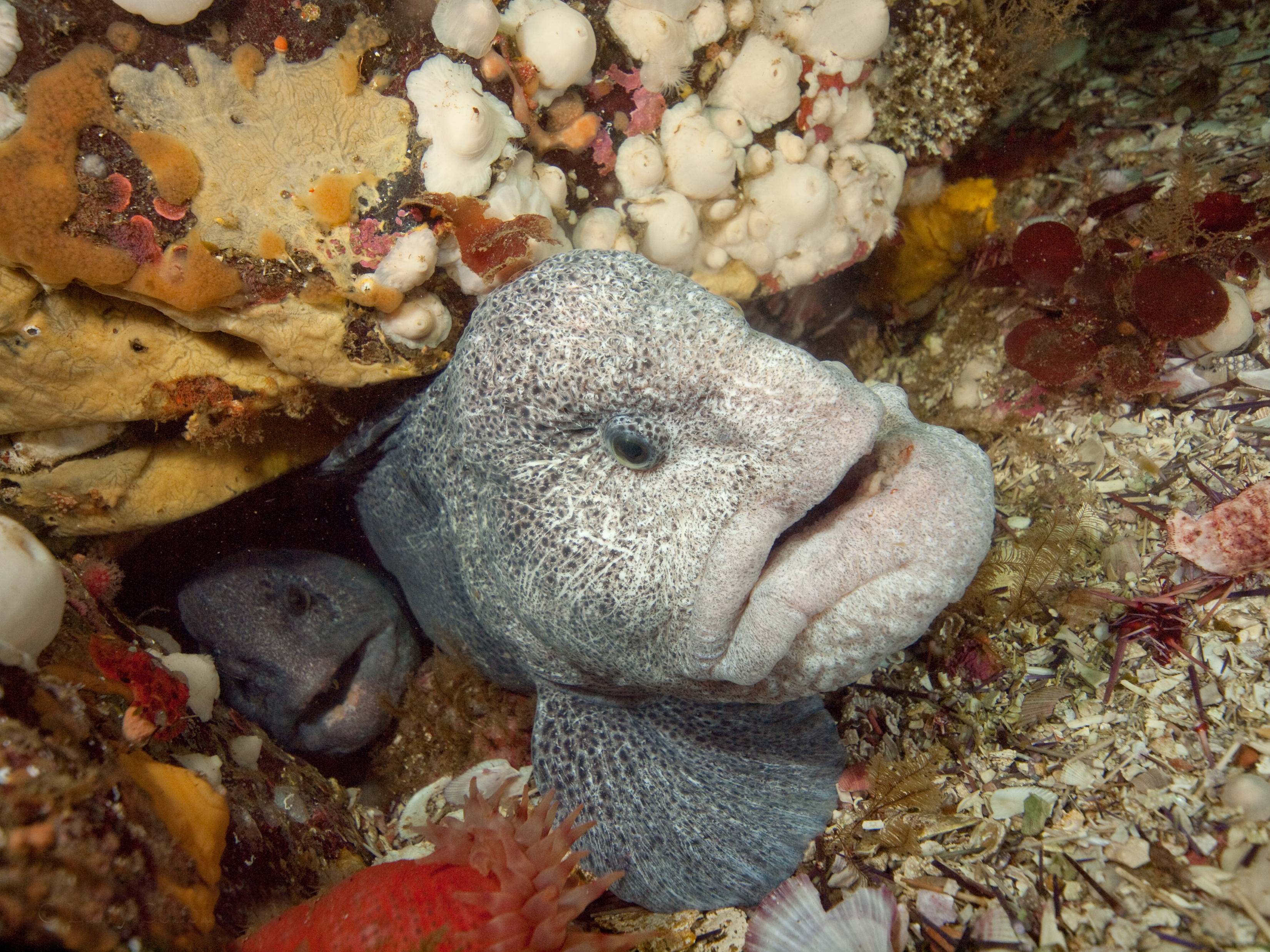
Vancouver Island, British Columbia, Canada
Text and photos by Larry Cohen
Many scuba divers enjoy going on warm-water trips, but one of my most favorite dive locations is the cold, nutrient-rich waters of British Columbia. The water might be green and cold, but this is an underwater photographer’s paradise. I traveled across North America twice to experience the area’s magnificent marine life.
The first trip was with John de Boeck’s Browning Pass HideAway and the second trip was on the Nautilus Swell liveaboard. Both trips were spectacular. Diving double tanks, my dive buddy, Olga Torrey, and I stayed in the water longer than the other divers. The Swell’s captain commented that we did not move more than three meters during a one-and-a-half-hour dive. There was always so much to observe and photograph, we did not have to stray far from our entry point.
Wolf eels have always been on my bucket list. They might have a face that only a mother could love, but these gentle fish have a wonderful personality. We spent hours feeding them sea urchins. Seeing a relatively small giant Pacific octopus out in the open during the day was a real treat.
At the end of our trip on the Nautilus Swell, the captain said we could do one last dive in Port Hardy. He told us that it would be a dark dive, and the visibility would be limited. He said we should see some big lingcod. Jumping in the water, we realized the captain was correct.
Even during the day, it was so dark it felt like a spooky night dive. As we explored the area, we saw a lingcod so huge, it scared us! When the captain said big, we did not know he meant gigantic! This was the perfect ending to another great dive trip to British Columbia.
We cannot wait until we could go back to explore the rich underwater environment of western Canada. Visit: liquidimagesuw.com
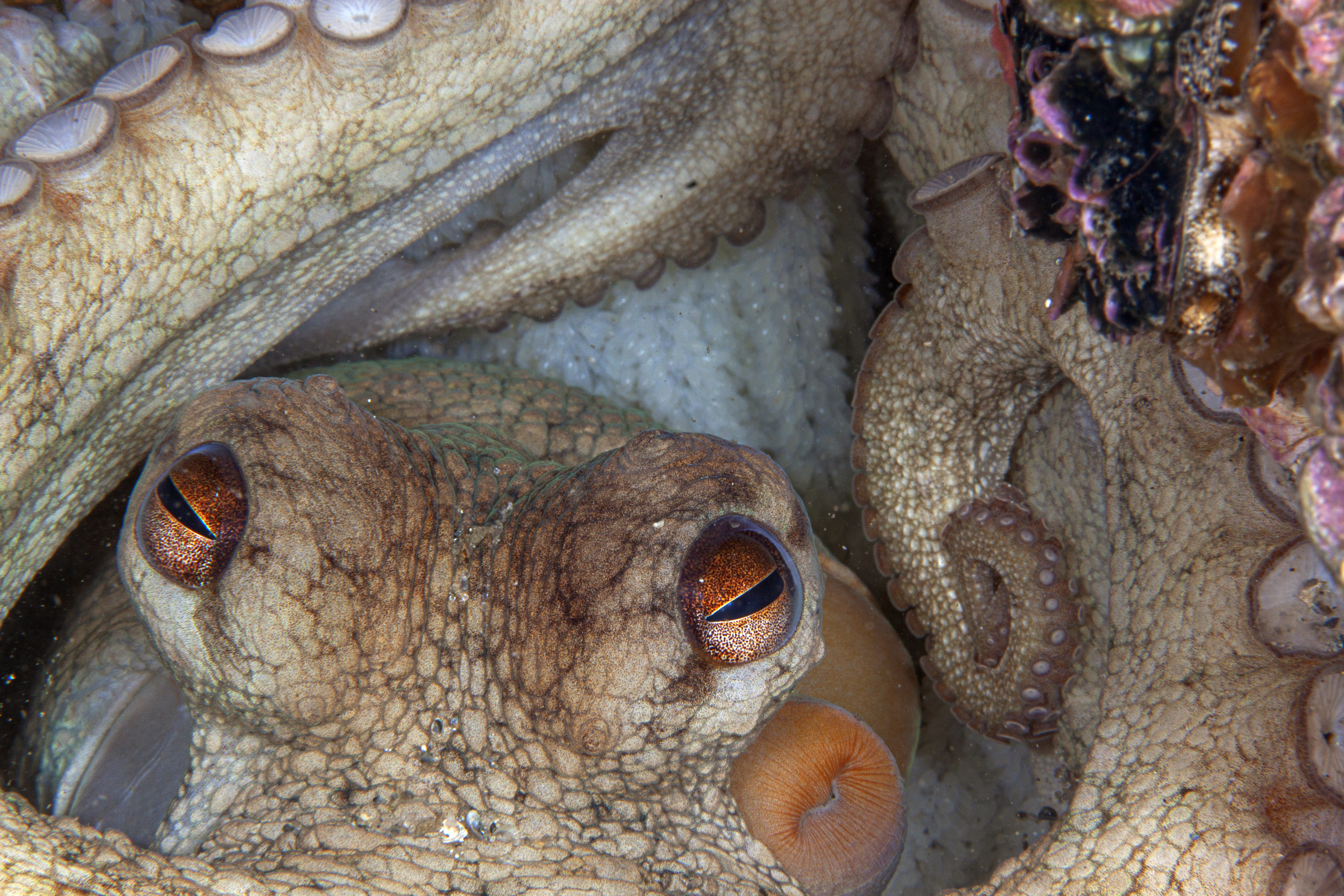
Blue Heron Bridge, Riviera Beach, Florida, USA
Text and photos by Lureen Ferretti
Considering the number of favorite dives sites I have, determining an ultimate favorite was difficult. So, I based my decision on the number of great photos and memorable experiences I have had at a single site. This would place the world-renowned Blue Heron Bridge in Riviera Beach, Florida, at the top of my list.
If you are unfamiliar with the type of diving at the site, it is referred to as muck diving. There is a shallow, sandy bottom, with little to no natural coral, gorgonians or marine vegetation. It is located in the Intracoastal, a body of water that lies between the mainland of southeastern Florida and a thin barrier island to the east of the mainland. The ocean water is refreshed with each high tide, which brings with it a multitude of cryptic critters from the Gulf Stream current. The best time to dive is generally an hour before high tide to an hour after high tide, but with good air consumption and knowledge of the terrain, you can extend your dive time.
Why is it my favorite? It is just a 45-minute drive from my home, and the price is right—just the cost of an air fill, allowing me to dive there frequently. At Blue Heron Bridge, I have learned so much about marine life behavior, camera settings, strobe positioning, proper dive etiquette and good buoyancy skills... this dive site is a treasure.
Having dived here so often, I learned about the life cycles of many marine species and witnessed incredible behaviors. For example, striped bumblebee shrimp are most often seen when the water temperature is a bit “colder” during the winter months, and are most often found on purple short spine pincushion sea urchins.
Seahorses have a glorious mating ritual. They hold tails and swim together, and they move in a way that appears as if they are singing, but I suspect this is a process in which they hydrate themselves before mating, and the male bends over repeatedly to open his brood pouch before the mating pair lift off into the water column. Having witnessed their ritual on three separate occasions, I know what is going to happen when I see that behavior and so the waiting game begins. I dive as often as possible and watch from a distance so that I do not disrupt them, and if I am lucky, I will capture the moment the female deposits her eggs into her mate’s pouch (yes, it is the male that carries the babies).
I have also seen frogfish spawning several times, lancer dragonets spawning, predation (crabs are brutal), a multitude of cleaning stations, arrowhead crabs molting, and over the course of a couple of months, I tracked the progress of a new mother octopus from the day she first laid her eggs, after which she looked drained and unaware, to the day the eggs hatched.
These are only some of the amazing experiences I have had, diving at my local watering hole, but there have been many, many more. Visit: DeepWaterPics.com
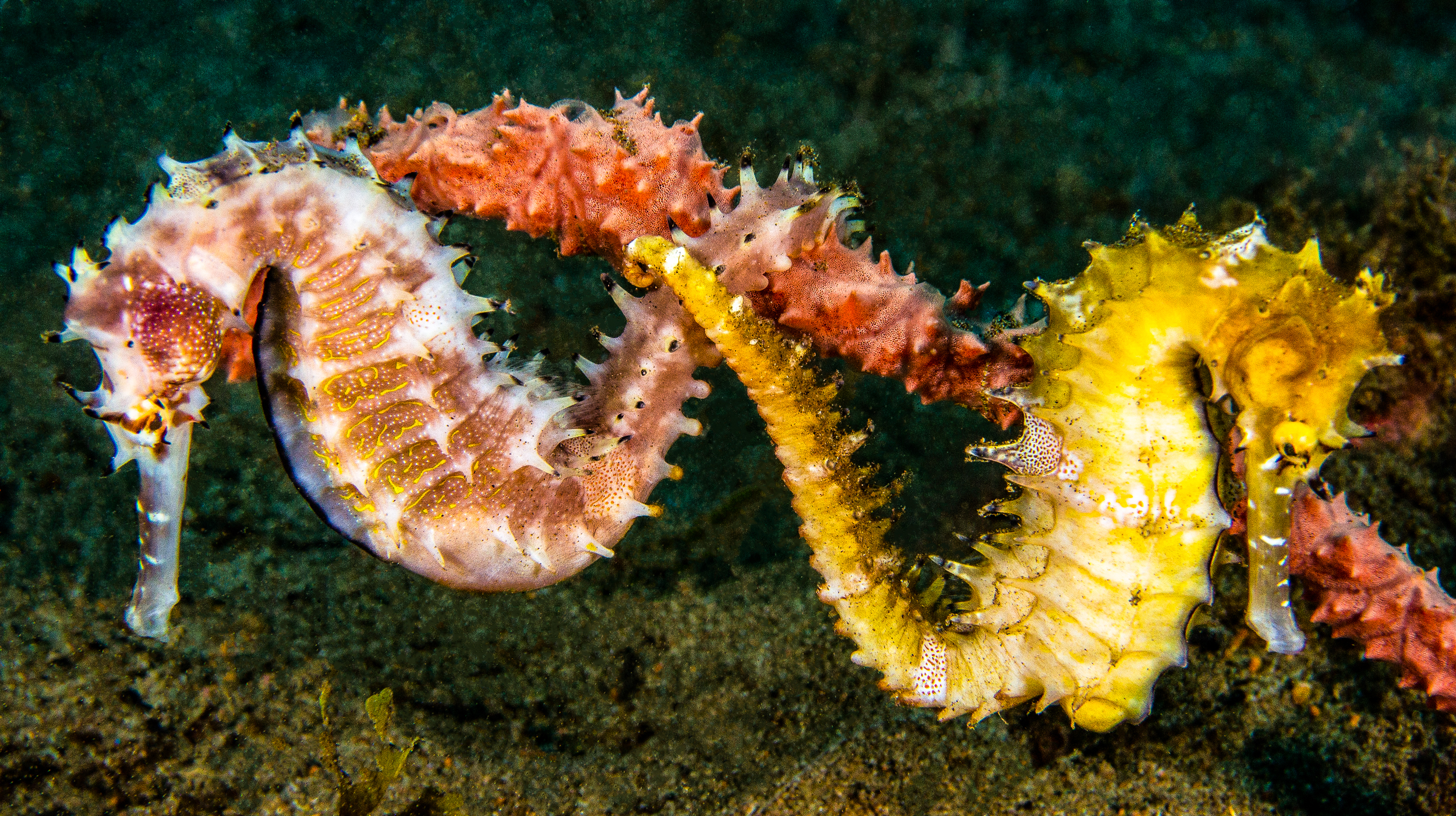
Dumaguete, Philippines
Text and photos by Anita George-Ares
The Dauin coast, a diving mecca often referred to as Dumaguete, is located on Negros Island in the Philippines. My husband, John, and I made five dive trips to Dumaguete. We are looking forward to diving there again. On every trip to Dumaguete, we see marine species that we have never seen before. Dumaguete’s wonderful marine biodiversity is due to its diverse habitats.
Although Dumaguete is known for its muck diving, it is more than a muck-diving destination. Scattered coral heads and sloping reefs provide great photographic opportunities. At different dive sites, there are different species depending on the bottom characteristics (coarse sand, silt, coral rubble or sea grass). In addition to photographing the numerous fish and invertebrate species, it is not unusual to see a green sea turtle or a turtle-headed sea snake. For those who love octopuses, I have photographed six different octopus species here, in addition to one octopus species that I have not yet identified. The many-toothed garden eel shown in the photo is one of three garden eel species I have photographed at Dumaguete. Two of the four frogfish species I photographed here are also shown.
Dumaguete’s dive sites are located within ten marine protected areas. There are a few, small artificial reefs made of tires or wooden boats. These artificial reefs have a good diversity of photo-worthy marine creatures. For those wanting to explore other dive sites, day trips are available to Apo and Siquijor Islands and to Oslob’s whale sharks.
Please visit my Facebook page at: facebook.com/profile.php?id=100016947967639
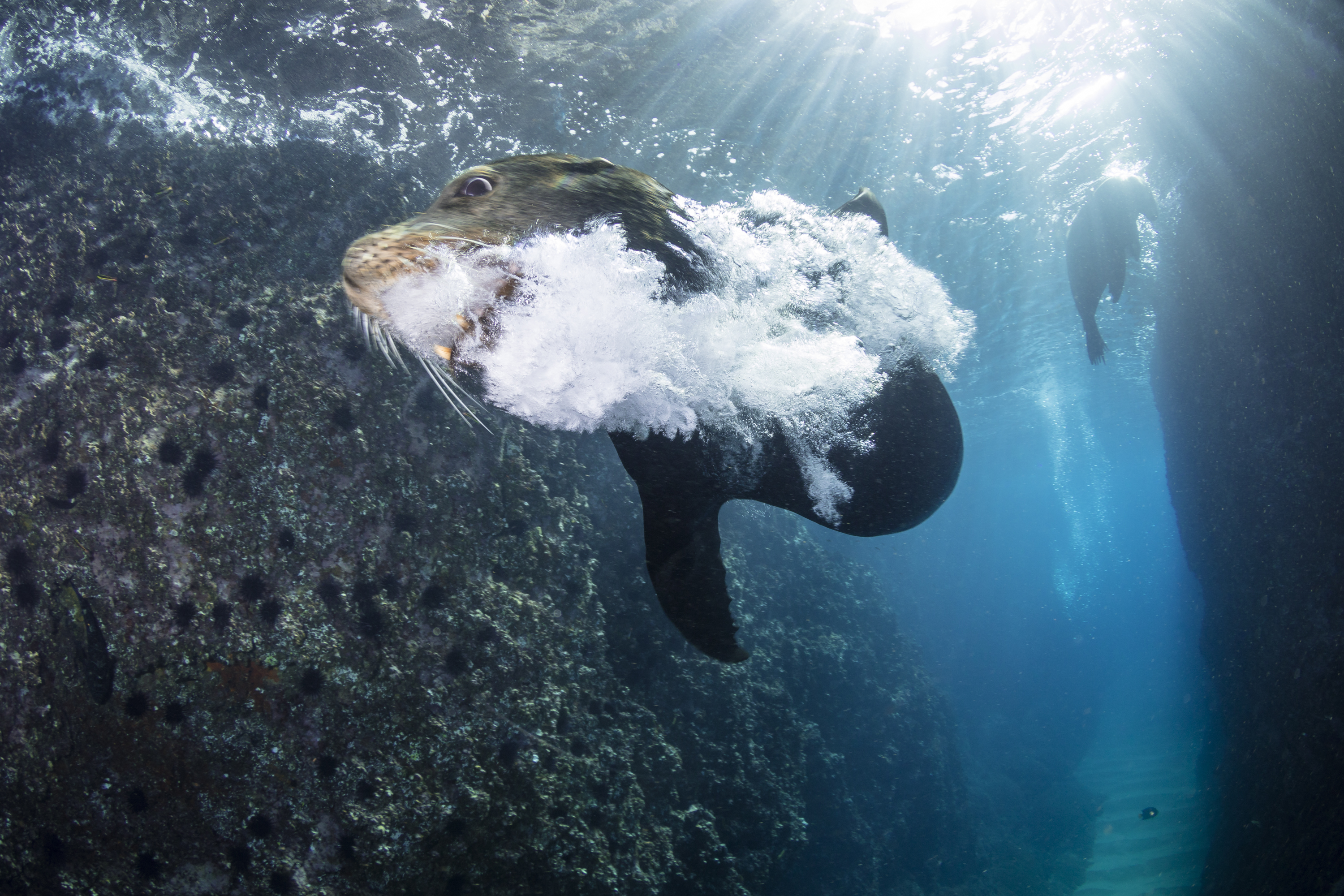
Land’s End, Baja California Sur, Mexico
Text and photos by Frankie Grant
Positioned as the last dive site on the Baja Peninsula in Mexico, Land’s End hosts an ever-changing variety of creatures big and small. As prevailing currents change with the seasons, divers have chance encounters with whales, schooling mantas, bait balls, whale sharks, and more. If this is not enough, Land’s End also boasts an active sea lion colony and a small shipwreck! This is a place so special and unique, every single dive will present new excitement.
During the change from summer to fall, schooling fish looking for protection swarm the rocks around Land’s End, leading to countless sea lions hunting together in this area. I have spent many dives simply content enough to sit on the sand and watch these sea lions bob and weave through the bait ball. Still, the most memorable experience would have to be witnessing a “heat run” of humpback whales zoom by the pinnacle as my clients and I looked on with amazement of the sheer size of these animals.
This site should be at the top of any ocean enthusiast’s bucket list for its ease of access, unique animal encounters as well as the other animal encounters one can link together into one amazing vacation. Look no further than Cabo San Lucas and Land’s End! Visit: frankiegrant.com
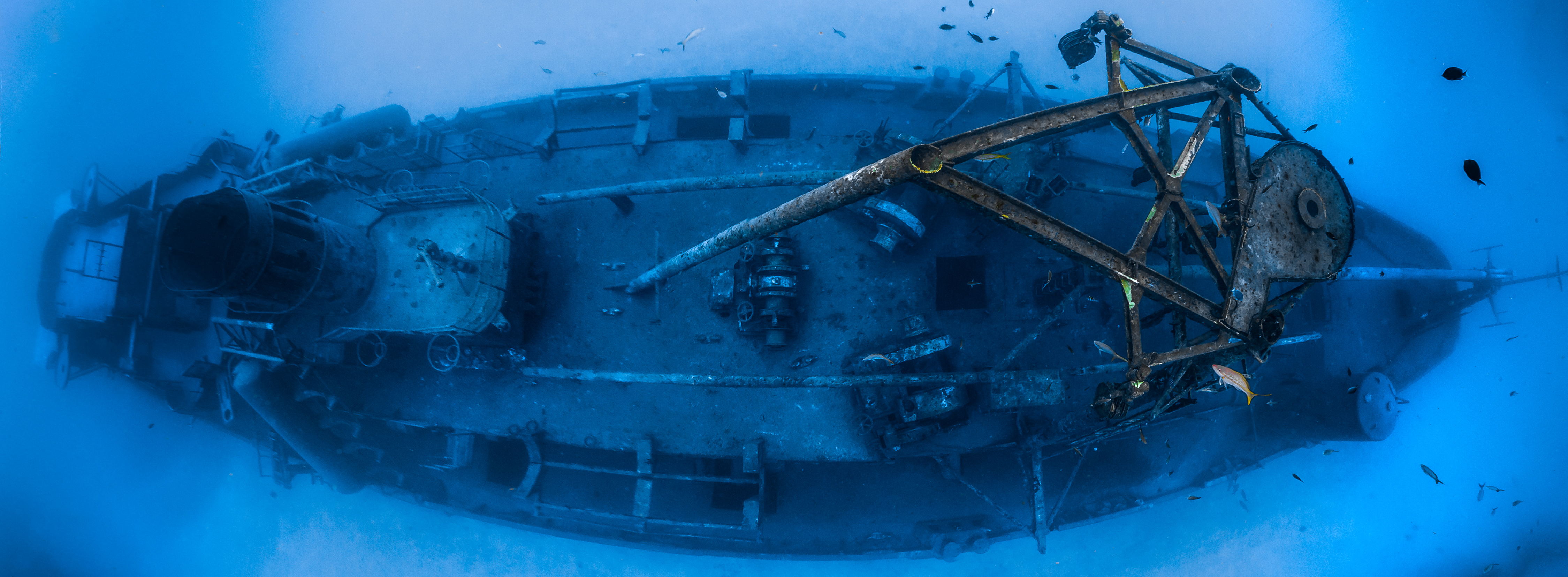
Grand Cayman, Cayman Islands
Text and photos by Jennifer Idol
Although the “next dive” is always “my favorite,” few destinations stand out as remarkable experiences. Of my dives, those at Grand Cayman have had the greatest influence over my photography. Cathy Church’s Photo Centre is a pillar of photography, which has attracted world-class photographers for decades, including Cathy herself and the photographers I had the joy of diving with during a once-in-a-lifetime photo workshop.
While my experiences with Grand Cayman are personal, the opportunities for anyone to experience the delights offered here are plentiful. From the still remarkable USS Kittiwake to Devil’s Grotto and stingrays, subjects abound. A hurricane transformed the USS Kittiwake in 2011 but also added the nearby reef as a subject by proximity.
The people we dive with enrich our dives beyond the environment we immerse ourselves into, which is why this often-photographed region has left such an indelible impression on me. Diving is easy with good visibility and limited current, so all attention can be given to buddies and photography.
Macro life abounds in shallow reefs, particularly from the Sunset House area. From secretary blennies to yellowhead jawfish and garden eels, unique animal behavior can be observed with ease.
Ever since the Covid-19 pandemic changed the world, more wildlife has returned to Grand Cayman, making this a highly desirable destination. Shore diving is widely available, and more accessible than boats, until tourism returns to full capacity. Visit: uwDesigner.com

False Bay, Cape Town, South Africa
Text and photos by Kate Jonker
They say that home is where the heart is. My home is False Bay, with its swaying great African kelp forests and pristine reefs filled with vibrant and fascinating marine life. It is here, in False Bay, that the Oscar-winning, heart-warming, heart-wrenching tale of a man’s friendship with an octopus took place. It is magical here.
False Bay is situated on the southwestern tip of Africa, where the sprawling metropolis of southern Cape Town and the lush vineyards of the Cape meet the ocean. The beauty above the water is reflected beneath the waves, where the mountains dip their toes into the sea and give way to underwater wonderlands.
There are shallow reefs that slope gently into the Bay, glittering kelp forests that line the coast, pristine deeper reefs, and wrecks. Whales roam False Bay throughout the year. Resident Bryde’s whales follow the bait fish, and in October and November, Southern right whales make False Bay their safe refuge. Dolphins, often in their hundreds, can be seen chasing the larger schools of sardines and this, in turn, attracts the orcas.
False Bay is a playground for Cape fur seals that laze on the surface, often swooping down and barking playfully at unsuspecting divers. Small reef fish such as blennies, triplefin and klipfish perch on the marine-lush pinnacles, whilst dozens of jewel-like nudibranchs graze their way across dense pastures of soft corals, sponges, bryozoans and hydroids. Beautiful basket stars, clinging to the many sea fans, wave their outstretched arms to-and-fro in the gentle surge, grasping at tiny particles of food in the water column.
Small sharks such as puffadder and dark shysharks loll lazily on bouncy yellow sponges, and the larger pyjama and leopard catsharks patrol the reefs in search of a snack. Inquisitive short-tail stingrays, gully sharks and sevengill cow sharks can also be encountered in the kelp forests.
False Bay has it all! No matter where I travel, it is the kelp forests and reefs of False Bay that call me back; this is my home, and where my heart belongs. Visit: katejonker.com
Coronado Islands, Baja California, Mexico
Text and photos by Celia Kujala
Diving with sea lions is one of the most fun and magical experiences a diver can have underwater. One of my favorite places to dive with them is the Coronado Islands, a small group of islands off the northwestern coast of Baja California, Mexico, accessible by a day trip from San Diego, California.
The best dive site for interactions is Lobster Shack on the North Island where the California sea lion rookery is located. It was there that I first went diving after I bought an underwater housing for my DSLR camera. It is a location that keeps drawing me back.
California sea lions give birth to their pups in early summer. As summer comes to an end, the pups have matured enough and start venturing farther away from the shore. Each day, they gain more and more confidence, exploring their underwater world.
They are extremely adorable and curious. Play is a very important part of their development and everything in the ocean is a potential toy. They enjoy playing with each other, seaweed, rocks, starfish, sticks, feathers and even divers!
Observing the individuals in this rookery has taught me so much about sea lions and underwater photography. I am forever grateful for each moment. When the time comes for me to leave their underwater paradise, I start dreaming of the next time I can slip back into their world. Visit: sealpeace.com
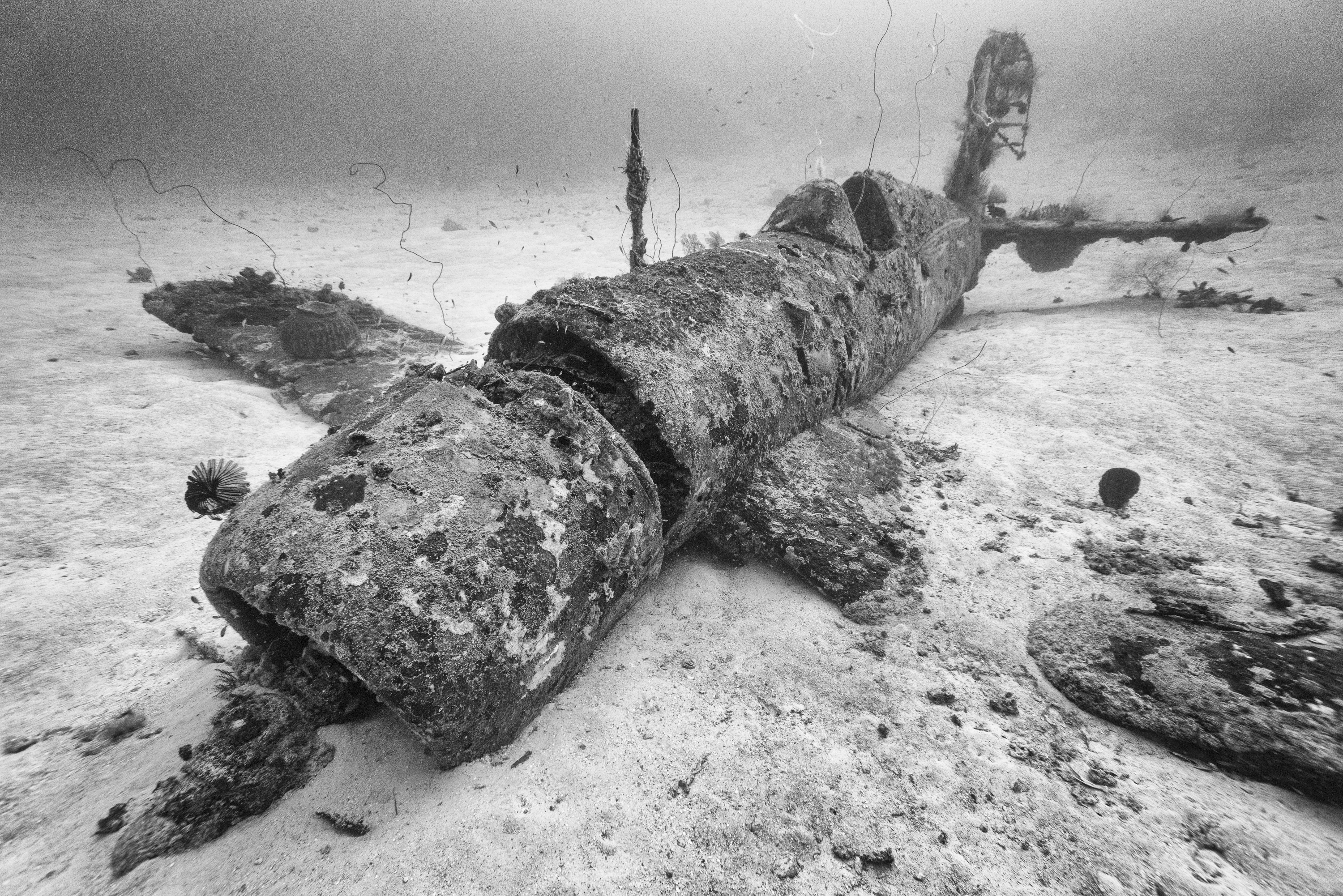
Solomon Islands
Text and photos by Matthew Meier
I cannot honestly say that I have only one single favorite dive destination, as I have been fortunate to experience dozens of incredible dive adventures around the globe. However, my most recent addition to the “I-cannot-wait-to-get-back-there” list is the Solomon Islands. This remote chain of tropical islands off the eastern edge of Papua New Guinea offers seemingly exclusive access to pristine, rarely visited coral reef systems, magnificent and massive sea fans and plate corals, spectacular underwater caverns, abundant sea life and a wide assortment of World War II wrecks, both above and below the surface.
Numerous land-based dive operations, with an array of accommodation options, exist on several islands, plus two liveaboard dive boats offer varying itineraries to transport divers to the otherwise inaccessible corners of the Solomon’s over 900 islands.
My fascination with WWII history in the Pacific added special meaning to touching down on the capital island of Guadalcanal and to observing where John F. Kennedy was stationed before being shipwrecked in his PT-109. I was also privileged to dive on a newly discovered Corsair fighter plane near the town of Munda, which was nearly fully intact 75 years after crashing into the sea.
Bring your sense of adventure, as things are still a bit rustic, but the locals are lovely and inviting, the diving is phenomenal, and the scenery is out of this world. Save space in your luggage for some of the planet’s best woodcarvings and do not miss the fresh squeezed bush-lime juice. You can thank me later. Visit: MatthewMeierPhoto.com

Truk Lagoon, Chuuk, Federated States of Micronesia (FSM)
Text and photos by Brandi Mueller
I love diving no matter where I am, but I really love wreck diving because of the history involved. I find nothing more exciting than to be able to literally dive into history and see a ship or plane, knowing the stories of how it got there. Truk Lagoon, now known as Chuuk Lagoon, is one of the world’s most famous wreck diving locations, where more than 50 vessels were sunk in one battle during WWII.
The Americans launched Operation Hailstone on 17 and 18 February 1944, and blindsided the important Japanese base, leaving an entire museum underwater for divers to explore. Even better, the tropical waters of Micronesia in the Pacific Ocean have turned the wrecks into living memorials with colorful soft coral draped like wreaths and fish life swarming the ships.
The types of wrecks here include luxury cruise liners requisitioned by the Imperial Japanese Navy, merchant ships, two destroyers, a submarine, airplanes, a tugboat and more, with the largest over 500ft long. The Federated States of Micronesia made salvaging the wrecks illegal early on, preventing looters from taking home artifacts, which means many items are still intact and inside the ships for divers to see. Elegant china, rubber soles of shoes, gas masks, beer and sake bottles, sinks and toilets are just some of what can be seen. There are also Long Lance torpedoes, massive shells, landmines, and literally piles of bullets, among other ammunitions.
Divers can still penetrate the ships to view engine rooms, galleys, bathrooms and crew quarters. Amid the history behind the wrecks, the artifacts you can see, and the lovely marine life that has made the wrecks their home, there is something for everyone at Truk Lagoon. Please visit: brandiunderwater.com
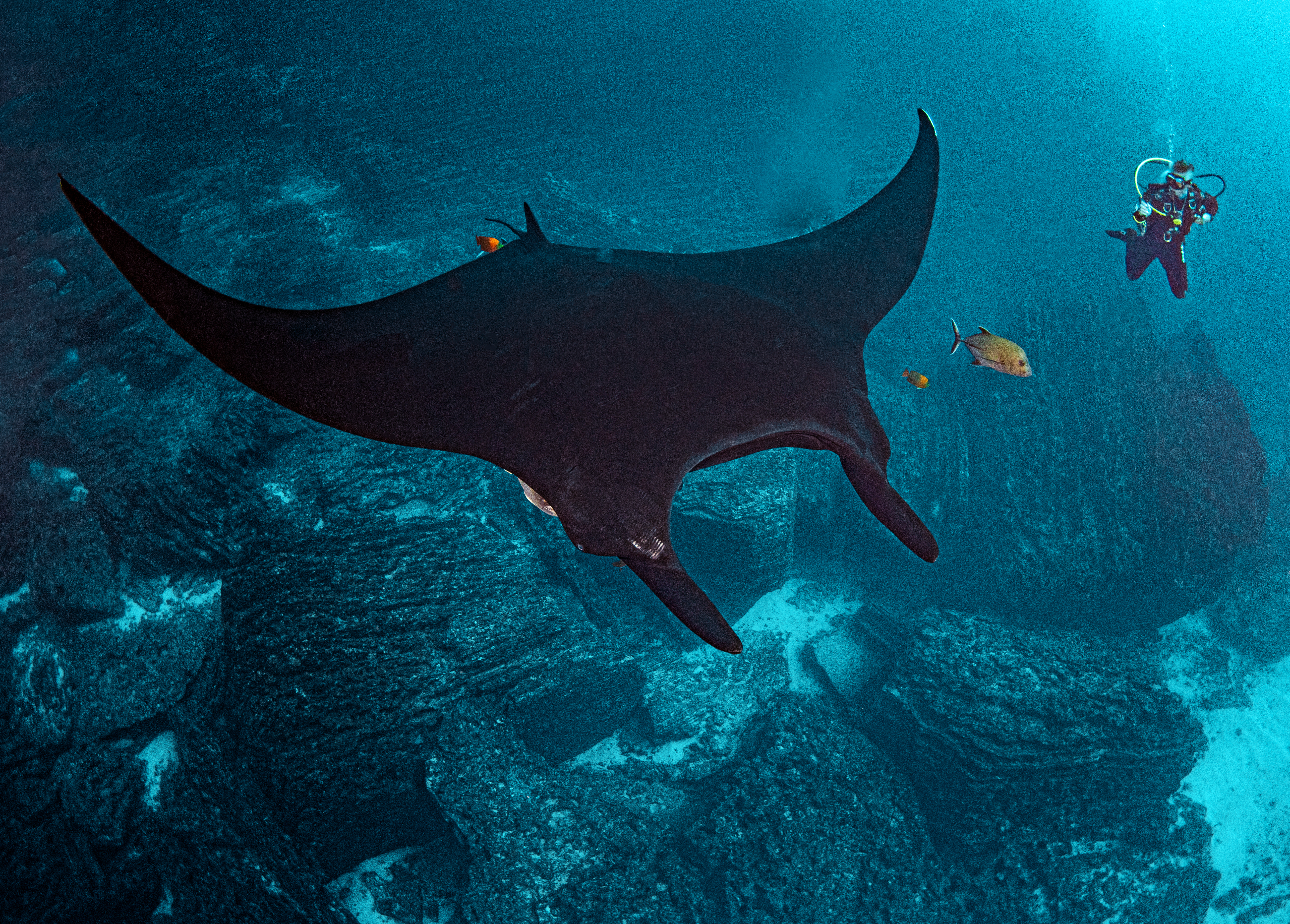
housing, Inon Z330 strobes
Revillagigedo Archipelago, Mexico
Text and photos by Gary Rose, MD
Pinnacles reaching up from the benthic Pacific floor a mile below, lava flows extending like rivers into the deep azure of the sea—and without human presence—synergistically create one of the most remote and beautiful dive locations on Planet Earth. The islands of the Revillagigedo Archipelago are located 300 miles from Cabo San Lucas, Mexico. Deep azure water, strong nutritive currents, and open ocean collaborate to create the perfect environment for grey whales, whale sharks, giant mantas, hammerhead sharks, whitetip sharks, Galapagos sharks, porpoises and seals.
At Socorro Island, giant mantas, with wingspans of up to 21ft, regularly swim up to patiently waiting divers. They dance, swirl, loop, pirouette and plunge to the rhythm of the sea. When they come up close, their cognitive eyes penetrate one’s thoughts, and you become as one.
Roca Partida Island is 300ft long and plunges vertically to the ocean floor, miles below. It is a prolific aquarium of pelagic diversity. Unique to Roca are the shallow “cavelets” that pockmark this vertical and sheer drop-off, each containing uniquely packed whitetip sharks within, which live symbiotically with lobsters and moray eels. If you approach very slowly, from below, you will be able to photographically capture this amazing natural phenomenon.
One can only get to Revillagigedo by liveaboard. I traveled with Nautilus Liveaboards on the Undersea. In addition to the amazing comfort, scrumptious dining around the clock, four dives per day with a fabulous crew, it was a photographer’s dream, complete with individual work and charging stations. Revillagigedo is my favorite dive site, and I am already planning my next photographic dream trip. Visit: garyrosephotos.com

New Jersey Shore, USA
Text and photos by Michael Rothschild, MD
I have been to Truk Lagoon, Bonaire, and a number of other exotic dive locations, but my favorite dive location is just an hour’s drive from my home in New York City—the New Jersey Shore. One of the reasons why I love the dives here is that I can go every weekend. There is no need for time off from work, air travel or hotels, and no camera and dive-gear luggage problems. But it is not just that. There is world-class cold-water diving here, much of it accessible to recreational divers.
Folks here live on the edge of a vibrant marine ecosystem. I have seen a spectacular range of sea life, from tiny, beautiful nudibranchs to a humpback whale, which swam past me last season while I was on the deco line.
In addition to critters, the seafloor off the coast has hundreds of diveable shipwrecks. This is because New York has been a major shipping hub for 500 years, and because the relatively shallow continental shelf extends far out to sea, into the New York Bight. While some wreck dives at dive destinations are artificial reefs, most of those off the New Jersey Shore are “real” wrecks, each with a fascinating and often tragic history. For example, during WWII, U-boats prowled these shores, sending scores of ships to the bottom. You can dive these historic sites today, as well as several of the submarines that sank them. Visit: seagypsies.nyc/imaging/

Deacon’s Reef, Milne Bay, Papua New Guinea
Text and photos by Don Silcock
My all-time personal favourite dive location is Deacon’s Reef on the northern coast of Milne Bay. Why? Well, because it was the inspiration for my long-term fascination with Papua New Guinea.
I lived and worked in a total of four countries in the Middle East from 1977 to 1991. The last seven of those were in Bahrain, in the Persian Gulf, where I became a BSAC instructor. Every month, an issue of National Geographic (remember them?...) would arrive in my mailbox, and I was always inspired by the stories and images from remote and exotic locations.
Then in April 1988, there was an underwater image on the front cover, of an aircraft wreck in Papua New Guinea taken by David Doubilet, and inside was his story of diving there, including a wonderful image from Deacon’s Reef.
It took another ten years before I finally made it there; the logistical challenge of emigrating to Australia with my young family had to be addressed first. I eventually found the spot Doubilet had taken his image, but sadly missing was a model and any underwater photographic capability on my part.
Over the years since, I have dived Deacon’s Reef many times. About five years ago, I was able to capture a couple of images that I felt came close to those taken by Doubilet over 30 years ago. Underwater photography is very much a journey, and inspiration is a must to embark on it. Visit: Deacon’s Reef
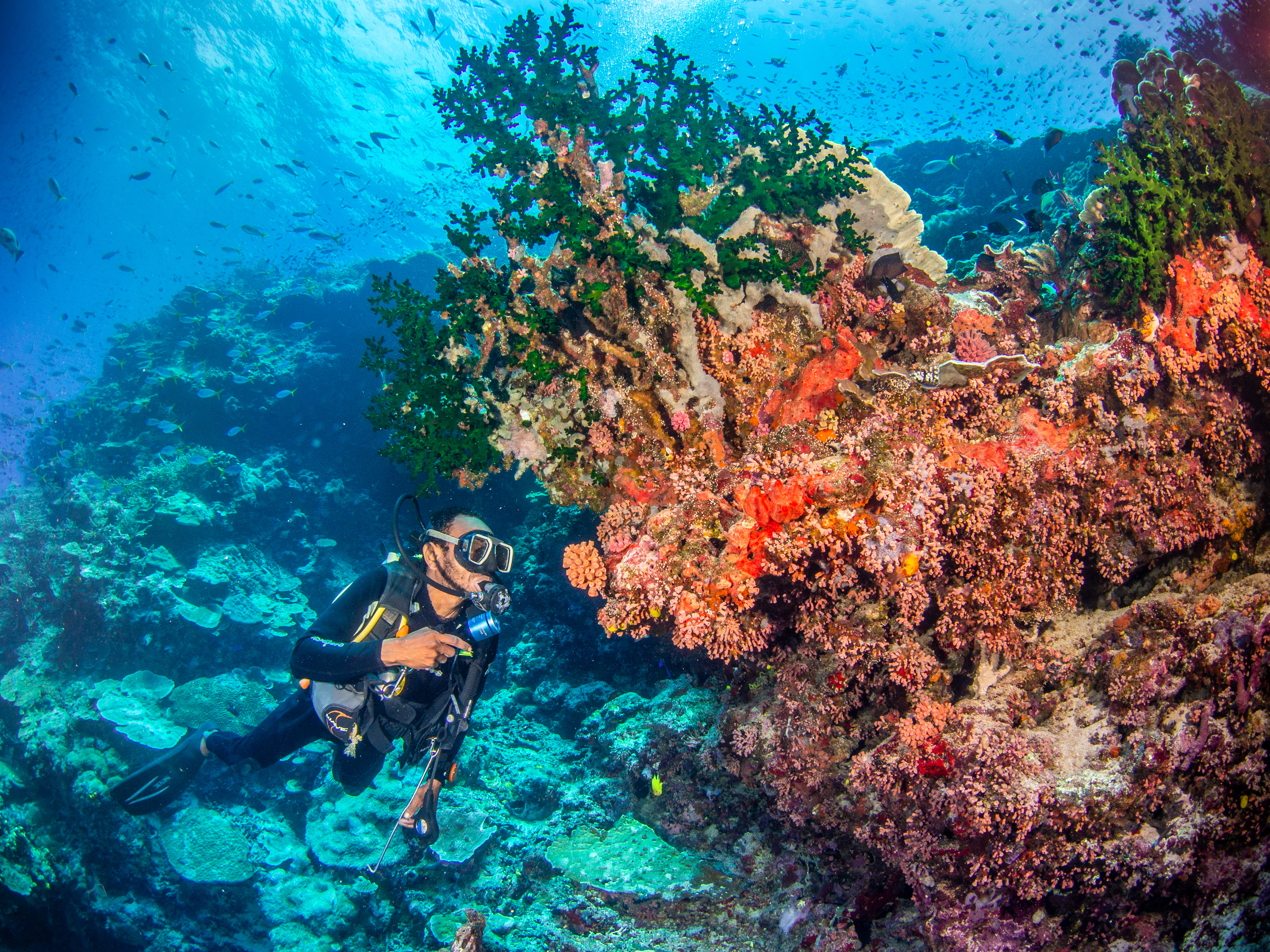
Tufi, Papua New Guinea
Text and photos by Olga Torrey
Recently, I took a trip to Papua New Guinea; it was my first time visiting the country, which I had dreamed about since my childhood. Tufi Resort was one of the highlights. As the plane landed on the dirt runway, I looked out the window and saw a grass hut with a banner that read: “Tufi International.” I knew there was no Starbucks here, but an incredible adventure was about to begin.
Tufi Resort had fast dive boats, so most dive sites were about an hour away from the dock. Once one arrived, the reefs were spectacular! Powerful currents and nutrient-rich water brought in many pelagic fish, including tuna, barracuda, hammerhead sharks, reef sharks, eagle rays and grouper. The clear water, giant coral heads and sponges impressed me. Mulloway and the other reefs were stunning. Tufi was a true paradise for underwater photographers.
In contrast to the spectacular reefs, the Tufi dock underwater looked like a junkyard. I wondered if I would find any living creatures there. To my surprise, I saw an astonishing variety of anemonefish, gobies, nudibranchs, shrimp, scorpionfish and banded pipefish. The dock at Tufi Resort became my favorite macro photography site.
During the stay, our group of divers was invited on a cultural tour of Baga Village. Members of the local tribe brought us to their village on outrigger canoes. We were greeted with villagers dancing in festive attire. Members of the local tribe demonstrated aspects of their traditional lifestyle, including how they made fishing lines, baskets for fruits and vegetables, necklaces of seashells, traditional cuisine, fire for cooking, clothing painted with traditional ornamentation, thatched roofs and even tattoos.
The stay at Tufi was a great experience. I cannot wait for the opportunity to return. It is a place that offers so much to see below and above the water’s surface. Visit: fitimage.nyc
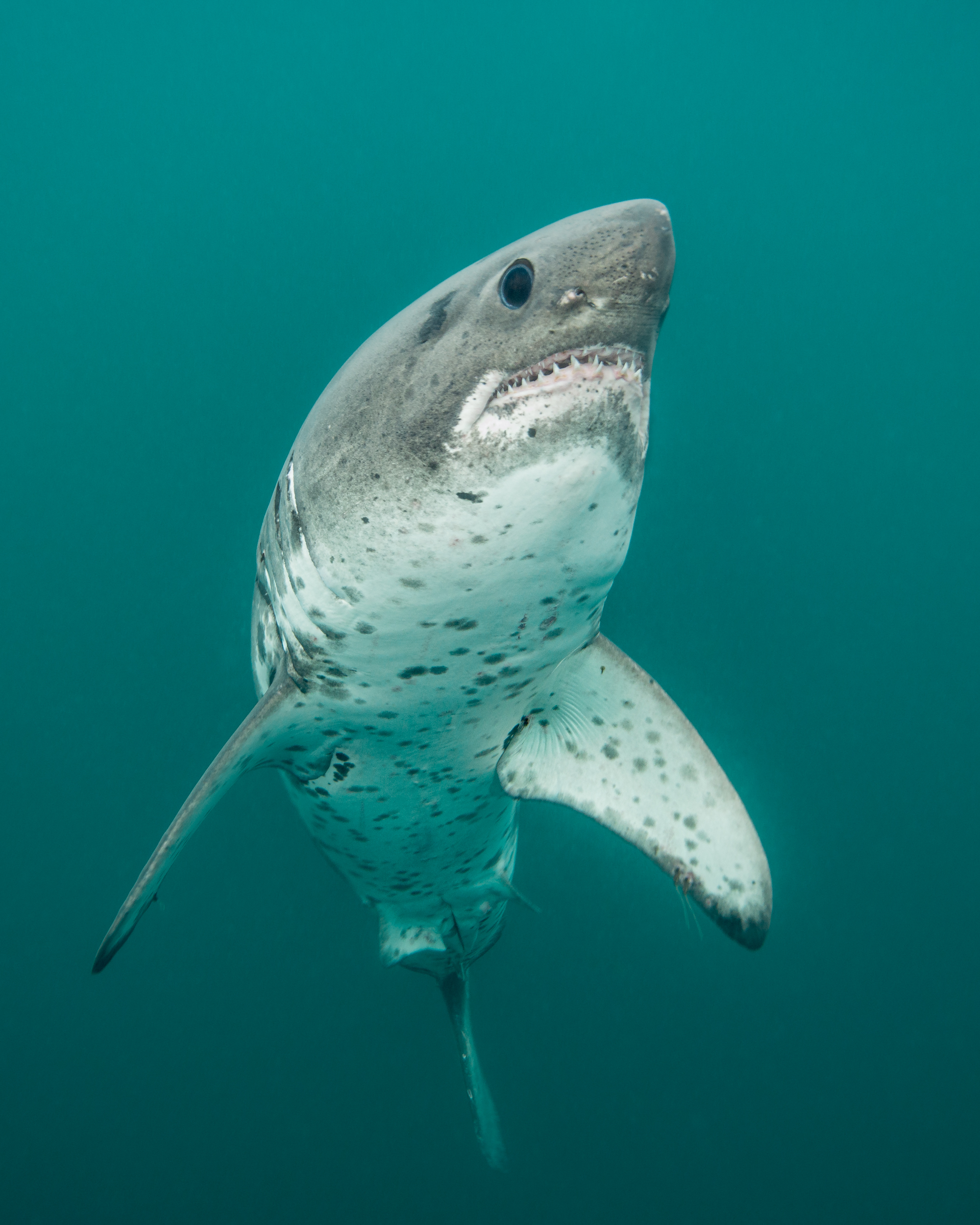
Ravencroft Lodge, Prince William Sound, Alaska, USA
Text and photos by Ron Watkins
An adventure in the wild, both above and below the water, is why I travel over 3,300 miles to dive in frigid 50°F water. The elusive salmon sharks that frequent the area in pursuit of spawning salmon are what first drew me to the location, but after my first trip, I realized that the area has so much more to offer. Massive blooms of moon jellyfish, so thick they block out the sunlight, are another highlight, as well as photographing the salmon run in shallow nearby streams.
Dive sites include a variety of sloping underwater rock formations, pinnacles and kelp forests, which host an abundance of marine life. Dive sites are chosen based on water conditions, tides and currents, but my favorites are Manomi’s Rocks, Luke’s Wall and the area right off the Ravencroft Lodge. You can plan to see an array of macro subjects, including hooded nudibranchs, colorful shrimp, decorator crabs and an abundance of bottom-dwelling fish to keep even the most seasoned macro photographer busy. Larger subjects like the colorful red Irish lord, sculpin, rockfish, halibut, and if you are lucky, a giant Pacific octopus may be spotted on any dive.
Accommodations at the rustic, yet comfortable fishing lodge bring me back to childhood memories at summer camp where the days are long (20 hours of sunlight) and there are endless activities in nature. A favorite topside activity is skiff rides in search of bald eagles, sea otters, river otters, deer, elk and bear. Visit: ronwatkinsphotography.com





























